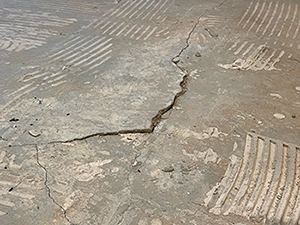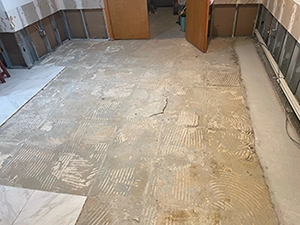In the electronics world, a cold joint is a solder joint that looks good but doesn’t actually conduct electricity. What in the world is a cold joint when it comes to foundations? Adam explains.
Narrator: It’s time once again for the “Crack Man Podcast” hosted by A1 Foundation Crack Repair. I’m Darren Kincaid here with the Crack Daddy himself, Adam Tracy. Adam and The Crack Man Rich have over 30 years’ experience in the construction industry. Rich as over 25 years as the president and founder of A1 Foundation Crack Repair. This podcast provides expert basement waterproofing, concrete repair, and preventative maintenance tips for homeowners and businesses. A1 Foundation’s valuable insight will help avert a disastrous flood within the basement, health problems associated with water infiltration, and protect your biggest investment….your home. The topic of today’s podcast: What is a cold joint as it pertains to foundations?
Narrator: So, Adam, in the electronics world, a cold joint is a solder joint that looks good, but doesn't actually conduct electricity. What in the world is a cold joint when it comes to foundations?
Adam: Well, I could say with 100% honesty, it has nothing to do with anything electronic in a foundation. It has everything to do with the time in which the concrete was poured or placed. Typically, we’ll see a cold joint or a cold pour when an existing foundation is there and that will be an addition put on. So, you'll have the old foundation butting up to a new foundation pour, and that interface between the old and the new is what we call the cold joint. The reason why it's an area of concern, and we talk about it, is because that deal is not always going to be perfect. You have something that's been established for many years, decades, who knows how long, and then you're pouring a brand-new concrete foundation up to it.


Now structurally, there's many ways that you can tie into the old foundation so that there's absolutely no concerns about movement and that it’s structurally sound. Usually it involves rebar, doweling, and potentially, underpinning. But when it comes to waterproofing, it can be quite challenging. Often, we'll see a cold joint get exposed along a vertical seam. Again, an old foundation against a new foundation where there's typically an addition that's been put on.
Now there are some rubber sealants that can be put on there, some butyl seals that can be put on there as part of the supporting process, but those aren't used all the time, especially in residential construction, and they're so only limited as to how effective they can be. Now the good news is that we treat this just like a normal foundation wall crack. We'll inject into that seam at a 45-degree angle and use our closed cell polymer resin material, and that'll expand all the way out into the soil. It'll create a seal between these two pieces. The challenge is that these pieces typically move a little bit more independent of each other than a typical wall crack because they're not poured at the same exact time. They don't always have the same material consistency from 2022 pour to a 1967 pour, right? So, there's a little bit of material movement there, usually, within all the tolerance for structural loads, but more of an issue where water will find a way.
In fact, just recently, we had a kind of a unique situation in the town of West Roxbury, which, this one, had a horizontal port. So, there was done way back, when in the 60s or 70s, where it looks like they missed the pour and had to add in a section of wall. You had a line that was about 20 feet long that was only about 12 inches off the floor, maybe even last where that was the existing wall. They probably were thinking about having a walkout basement in that area.
But for some reason, they had to pour a full 6-foot wall on top of that to basically sit on top to support the house structure.
So, what if it’s going to be a walkout basement? The problem is that after years and years and years of water exposure, it finally broke through. And that horizontal cold joint was then exposed, and water was able to come through there. But we treat it just like a normal crack. We were able to inject it right into that seam, basically seal it off from the inside out and keep water from penetrating in there.
When you're doing a renovation project, a big renovation, which includes additions and additional pours against your existing foundation. These are always areas that are going to be a high priority for waterproofing. I recommend really being ahead of it, especially if you're looking at finishing a basement, only because these are more susceptible for leaks or even a traditional wall crack because you have a perfect seam that is going to get exposed at some point in time to water penetration. So, you can always do this preventatively. And that way, you have a warranty at hand before you finish that basement wall up and deal with issues down the line.
Narrator: Well, thanks, Adam, for explaining what a cold joint is and what you can do about it when it starts to leak.
Narrator: If you have a basement water problem and think you need a professional, or, if you’d like more information on foundation crack repair and basement waterproofing topics, please visit A1FoundationCrackRepair.com or call Rich at (866) 929-3171. Or you can email Rich at info@a1foundationcrackrepair.com. Thanks for listening and keep that basement dry.

